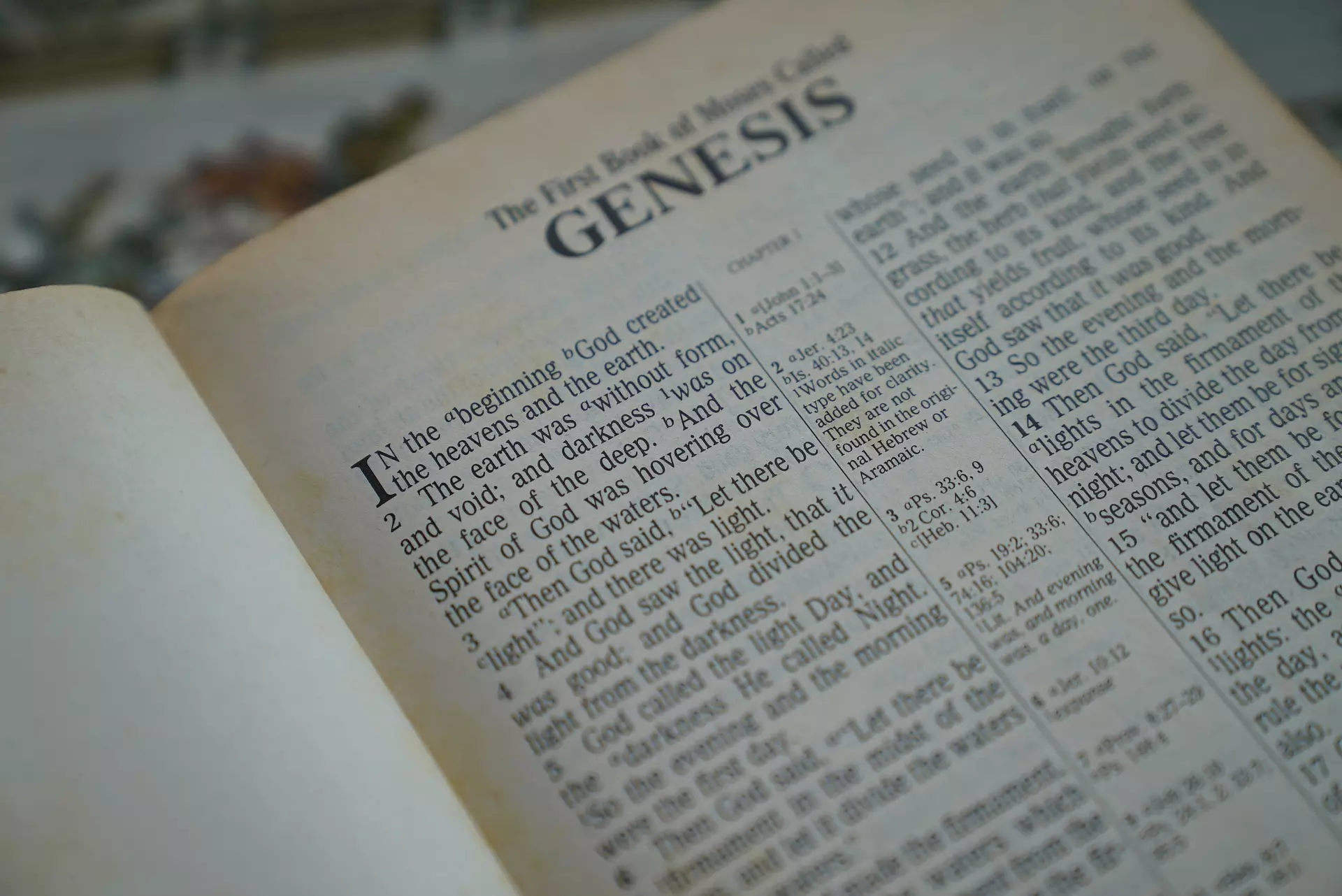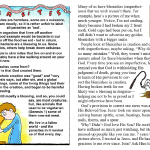[Abridged minus charts from Age of the Earth: Does the Bible Really say that God Created the World only 6,000 Years Ago?]
Determining the age of the earth using the Bible is a straightforward, two-step process:
- Determine whether the six days in Creation Week were ordinary days. This leads us to Adam, who was spontaneously created by God (i.e., he didn’t evolve) on the Sixth Day of Creation;
- Determine how long ago Adam lived using the genealogies in Genesis.
We know the six days in Genesis 1 were ordinary days (not six long ages) because the Hebrew word for day (yom) is qualified with “evening,” “morning,” and a number for each of the six days in the Creation Week. When yom is used with any of these qualifiers throughout Scripture, it always means an ordinary day.
Determining how long ago Adam lived is a straightforward process because Genesis records the fathering age and total lifespan of Adam’s descendants all the way to Abraham and his sons (most directly; in some cases indirectly). Summing the lifespans in these genealogies leads to Creation Week either about 6,000 or 8,600 years ago (based on the Masoretic or Septuagint texts, respectively[i]). We’ll take a closer look at these genealogies below.
In addition to these interlinking (and overlapping) genealogies, the Genesis account itself provides two clues that lead to our understanding that Adam and Eve were the first humans who were created immediately after God had created everything else. The first clue is God’s commission given to humans to take dominion over (that is, to wisely manage) everything God made during Creation Week. The second is God bringing the animals to Adam “to see what he would call them” (at the animal kind level, not every species) (Genesis 2:20). Thus, the Genesis account itself forbids inserting millions of years of animal death and life (e.g., the dinosaur “era”) before Adam and Eve were present to take dominion over Creation and name the animal kinds.
The Days in Genesis One
The Hebrew word for “day” (yom) is used over 2,000 times in the Old Testament. In some instances, it means a period of time or an era, but in the vast majority of instances it means an ordinary day.
In the first chapter of Genesis, it’s clear that yom means an ordinary day. The first time yom is used in the Bible is Genesis 1:5: “And the evening and the morning were the first day” (v. 5). Notice that day (yom) is qualified by “evening,” “morning,” and a number (day one). This pattern—evening/morning/number—repeats for each of the six days in Genesis 1, so the entire Creation Week is described by days that are qualified as ordinary days.
The word yom is used over 400 times in the Old Testament when it’s used with a number, like “first day.”
In every case, it always means an ordinary day. Yom is used with the word “evening” or “morning” 23 times, and “evening” and “morning” appear together without yom 38 times, and in all 61 instances the text refers to an ordinary day. God seemed to want to make it clear to us. He said “evening” and “morning,” then a day, and a number.
Because God is all-powerful, He could have just created everything in an instant, but He didn’t. He chose to take six days because He was setting up a system of days and a context for our lives and how the world works.
Genesis 1:14 states that God established “lights in the firmament of the Heavens to divide the day from the night” and that they would be used for “signs and seasons, and for days and years.” This shows that God began the measurement of time using days and years:
Two well-known units of time—days and years—are linked in Genesis 1:14, their duration being determined by the fixed movements of the earth in reference to the sun.
If we need to be convinced further, consider that God wrote the Ten Commandments with His own hand (Exodus 31:18, “He gave Moses two tablets of the Testimony, tablets of stone, written with the finger of God.”). When God wrote the Fourth Commandment, he stated:
For in six days the Lord made the heavens and the earth, the sea, and all that is in them, and rested on the seventh day. Therefore, the Lord blessed the Sabbath day and hallowed it. (Exodus 20:11).
What do you think God wanted the Israelites to believe when He said this? Long ages or real days? God was talking about the Sabbath, which is one day a week. If God meant “thousands of years” when he said “day,” then that would make for a really long work week! It seems from this passage that God told us what to believe, and how to model our lives: six days of work followed by a day of rest.
Our weeks have been like this ever since the beginning. After all, we don’t have a five-day week, do we? Back in the 1920’s the Soviets tried a five-day week and a six-day week, but it was a major failure. So they went back to a seven-day week. The seven-day week seems to be hardwired into human existence—as if God designed us to work six days and take a rest on the seventh. God gave us a day of rest to reset our internal clocks. God didn’t have to give us that seventh day, but He knew we needed it.
James Marshall’s gold discovery in Coloma (1848) was a catalyst that led to the California gold rush. Marshall’s diary is on display in a museum in Coloma, open to a page where he’s discussing the fact that people were caught up in a feverish gold frenzy—mining gold seven days a week with no rest. They were driven by the idea that the next “big nugget” was likely in the very next pan. He then remarks that most of these miners died between the age of 35 and 40. It seems like God knew what He was doing by setting up the “six days and a rest” pattern!
When fending off scholars who were developing the idea that God really didn’t create everything in six days (but rather only a single day), the famous reformer Martin Luther warned:
“When Moses writes that God created heaven and earth and whatever is in them in six days, then let this period continue to have been six days, and do not venture to devise any comment according to which six days were one day. But if you cannot understand how this could have been done in six days, then grant the Holy Spirit the honor of being more learned than you are.”[iii]
Doesn’t the Bible Say that “A Day to the Lord can be Like a Thousand Years”?
Many Christians ask, “Doesn’t the Bible say that ‘a day to the Lord can be like a thousand years.’” Second Peter 3:8 actually says that “one day is with the Lord as a thousand years, and a thousand years as one day.” This passage is talking about God’s judgment and His patience with man’s rebellion. It’s not talking about Creation Week.
Notice that the verse says one day is as a thousand years. It’s a simile showing that God is outside of time, because He is the Creator of time. We know that those who use this verse to say that one day in Creation Week took one thousand years are forcing that view onto the Bible since they never assert the last part of the verse: that a thousand years of Old Testament history all happened in one day.
This passage is saying that God is outside of time and is unaffected by it, but to man, a day is still a day. It’s not defining a day, because it doesn’t say, “a day is a thousand years.” It’s not even talking about the days of Creation. Rather, both times—a day and a thousand years—are described from God’s perspective because “with the Lord” these times are the same. The verse is saying that with God, time has no meaning, because He is eternal, outside of the dimension of time that He created. So a thousand years, a day, and a second all are the same to Him. He sees all of history simultaneously.
Because yom is used over 2,000 times in the Old Testament, it’s important to look at the context in which it’s used. In the passage in Peter, the writer is referring to Psalm 90:4, which says, “For a thousand years in Your sight are like yesterday when it is past, and like a watch in the night,” yet a night watch does not last 1,000 years, does it? Here, 1,000 years is just a figure of speech, a comparison to make something more vivid. In context, 2 Peter 3 is saying that although it may seem like a long time to us, the Lord still keeps His promises.
If each day in Genesis 1 was a thousand years, on day three God made the plants, but on day four He made the sun. We know plants need the sun to survive, so if each day was a thousand years, the plants would have all died long before the sun rose on the fourth day.[iv] Also, flying insects like bees were created on the fifth day to pollinate plants and trees that were created on the third day. It really makes more sense if all these components of creation were present for it to work as a whole.
How Do We get a 6,000-Year-Old Earth from the Bible?
Genesis 5 lists ten patriarchs that lived before Noah’s Flood. For each of these patriarchs, their age before having the son named, the years they lived after having a son, and their total years are listed.
Let’s take a closer look at this passage focusing on Adam, the first one listed in Genesis 5:
- Age Before Having First Son: And Adam lived 130 years, and begot a son in his own likeness, after his image, and named him Seth.
- Years Lived After Having a Son: After he begot Seth, the days of Adam were 800 years;
- Total Years: So all the days that Adam lived were 930; and he died.
There are three numbers are given for Adam: his age before having Seth (130), the years he lived after fathering Seth (800), and his total lifespan (930 years). Because these three sets of numbers are provided for all ten patriarchs before the Flood, it’s easy to assemble an inter-connected, non-overlapping chain that we can use for summing up the years that go straight back to Adam, the very first man created.
Adding the ages of the pre-flood patriarchs at their “age at birth of named son” sums to a total of 1,556 years. Because Noah was 600 years old when the Flood came (Genesis 7:6), adding 100 years to Noah’s age in the table (500) places the Flood at 1,656 years after Creation. Genesis 10 and 11 provide the next set of genealogies that allow us to move up the timescale to Abraham who lived about 2,000 BC.
So, the straight chronology from the Bible places Creation about 6,000 years ago.
Scholars have debated possible gaps in these genealogies for years, but even if there were gaps in these genealogies, we cannot insert them without basically rewriting the text to fit our own preferences. Further, such gaps may allow for hundreds of additional years, but certainly not thousands or millions!
Even many secular historians would agree with Christian scholars that Abraham lived about 2,000 BC, or about 4,000 years ago. If that’s true, with Abraham being the 20th patriarch after Adam listed in the line-up provided in Genesis, we can’t have tens of thousands of years’ worth of missing genealogies based on the (evolutionary) idea that “modern” humans emerged from ape-like ancestors about 50,000 years ago.
For example, some creation views (e.g., Progressive Creation) agree with the evolutionary timeline that places the evolution of modern humans about 50,000 years ago.[v] With this position, there would be 44,000 years of “missing” genealogies in Genesis (4,000 genealogy years from Genesis, plus the 2,000 years from Christ to present)! Just how can one fit an extra 40,000+ years into the 4,000 years accounted for in the Bible? Under this model, the Bible’s genealogies would not be a reliable record.
An additional consideration with the lifespans in Genesis is that many of them overlap, so there’s not a lot of room for gaps. Further, the Genesis genealogies are repeated in other parts of the Bible, including the books of Ruth, Jude, Matthew, and Luke. This shows that the New Testament and Old Testament’s human authors also believed in the Genesis genealogies as real history.
Finally, consider the fact that Jesus referred to the Old Testament over 40 times. Every single time He treated the Old Testament literally and historically. For instance, in Mark 10:6 Jesus mentioned that God created man and woman at the “beginning of Creation”—not long ages after Creation. Jesus also references other Old Testament accounts as true events, such as Noah’s Flood, the destruction of Sodom and Gomorrah, Jonah and the great fish, and many others.
Footnotes
[i] The Biblical timelines that rely on the 17th-century chronology formulated by Bishop James Ussher place Creation at 4,004 BC and the Flood at 2,348 BC. Some recent research into the copyist differences in the early Masoretic and early Septuagint texts place the Flood around 2,518 BC based on the Masoretic text and between 3,168 BC and 3,298 BC based on the Septuagint (and other early texts), with Creation as early as 5,554 BC. These differences, however, can be settled by comparing multiple texts to reveal the perfect nature of the original writings which were “written through man by God” without error. These issues have been discussed in papers from three leading creation ministries. See, for example: Brian Thomas, “Two date range options for Noah’s Flood,” Journal of Creation 31(1) (2017); Henry B. Smith Jr., “Methuselah’s Begetting Age in Genesis 5:25 and the Primeval Chronology of the Septuagint: A Closer Look at the Textual and Historical Evidence,” Answers Research Journal 10 (2017): 169–179. Answers in Genesis: www.answersingenesis.org/arj/v10/methuselah-primeval-chronology-septuagint.pdf(November 5, 2018); and Lita Cosner and Robert Carter, “Textual Traditions and Biblical Chronology,” Journal of Creation 29 (2) 2015. Journal of Creation: https://creation.com/images/pdfs/tj/j29_2/j29_2_99-105.pdf (November 5, 2018). Linking from the present to Abraham’s day is well established historically based on correlations between inscriptions and the biblical chronology of the Kings.
[iii] Ewald Plass. What Martin Luther Says: A Practical In-Home Anthology for the Active Christian, 1523.
[iv] God Himself provided the light source on day one.
[v] Leading Progressive Creationist, Dr. Hugh Ross, places the emergence of the human race via Adam and Eve about 50,000 years ago: Fazale Rana with Hugh Ross, Who Was Adam? (Colorado Springs, CO: NavPress, 2005), p. 45. See also: www.reasons.org/articles/new-date-for-first-aussies (January 26, 2017).







